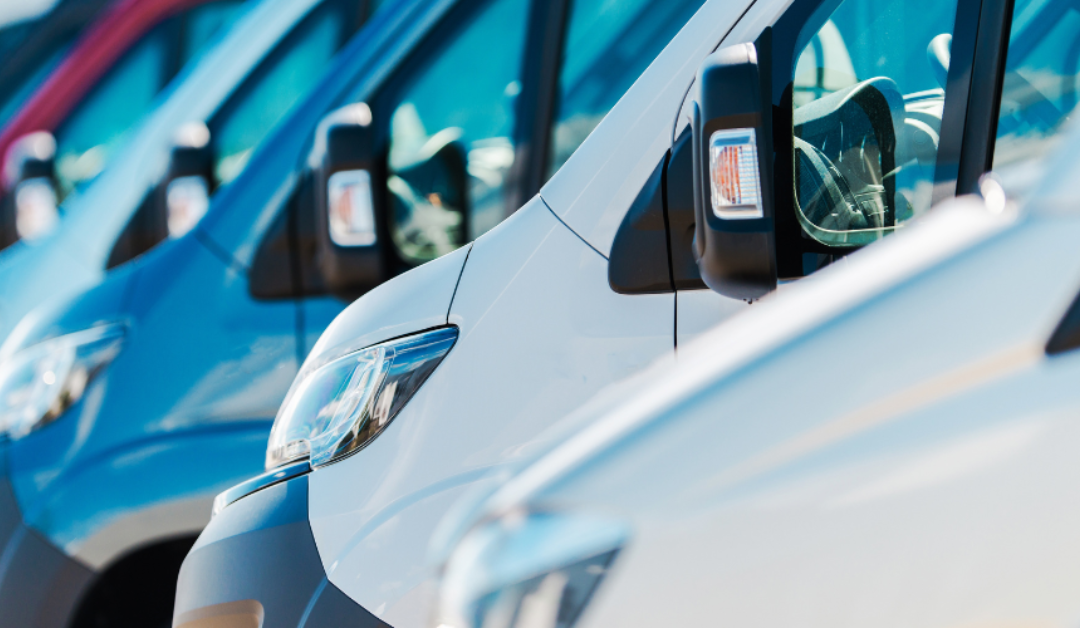Commercial vehicles are, more often than not, a necessary quality of a business, helping one’s team connect, deliver, haul, and perform routine tasks and commutes.
With nearly 50% of businesses offering company-provided vehicles, knowing the risks that come with vehicular assets is essential for the safety of your drivers. Understanding how commercial auto coverage works helps protect your company’s bottom line while also safeguarding the safety and well-being of everyone who operates or relies on your business vehicles.
| What Counts as a Commercial Vehicle?
A commercial vehicle is any car, van, truck, or specialty unit used primarily for business purposes. This includes everything from sedans used by sales teams to box trucks for delivery operations, service vans carrying tools, or trailers hauling equipment.
Surprisingly to many business owners, even an employee-owned vehicle may qualify as “commercial use” if it’s driven for work-related errands. Once a vehicle is used in the course of business, your company becomes exposed to liability (whether or not you own the vehicle). That’s why understanding how your team uses each vehicle plays a critical role in selecting the right insurance coverage.
| Commercial Auto Insurance Basics
Commercial auto insurance provides several layers of protection designed specifically for business-related driving:
Liability Coverage is the foundation of any commercial auto policy. If your employee causes an accident that results in injuries or property damage, liability coverage helps pay for those costs. Because business-related incidents often involve higher stakes, commercial liability limits are typically higher than those on personal auto policies.
Physical Damage Coverage includes collision and comprehensive coverage. Collision pays for repairs if your company vehicle hits another car or object. Comprehensive covers issues like theft, vandalism, hail, fire, or animal collisions. Without this coverage, you could be paying out-of-pocket to repair or replace a key vehicle your business depends on!
Uninsured/Underinsured Motorist Coverage protects your driver and vehicle if the at-fault party cannot pay for damages. Not everyone on the road carries adequate insurance!
Medical Payments or Personal Injury Protection covers medical expenses for occupants in your vehicle, regardless of who caused the accident.
Hired & Non-Owned Auto Coverage fills the gap if employees rent vehicles for business trips or use their own personal cars for errands. It protects your company if an accident occurs while the employee is driving a vehicle you do not own.
| Managing Company Vehicles as a Business Owner
Insuring company vehicles is just one piece of the puzzle. Proper, regular management can reduce accidents, control expenses, and strengthen your insurance program.
A well-equipped insured begins by identifying who is authorized to drive your vehicles. Many businesses run Motor Vehicle Record (MVR) checks when onboarding drivers and periodically throughout the year. Creating a written driving policy (such as covering seatbelt use, distracted driving, accident procedures, and expectations around mobile device use) can help set clear standards.
Routine maintenance is also paramount. Keeping your vehicles in good working condition not only promotes safety but may also support claims handling if something goes wrong. Finally, maintain accurate internal records. Your insurance agent relies on correct information about vehicle locations, usage, and drivers to help you stay fully protected.
| Adding or Removing Vehicles
Purchasing or retiring a vehicle is common for growing businesses, but managing these changes properly is crucial. Most commercial auto policies extend short-term automatic coverage for newly acquired vehicles, but it’s important to notify your insurance advisor right away. Keeping your vehicle schedule updated (complete with VINs, drivers, and usage details) ensures there are no surprises if a claim occurs.
| Next Steps
Commercial vehicles are powerful tools that help your business operate efficiently. With the right coverage and proactive management, you can protect your assets, employees, and operations from unexpected losses.
If you’re unsure whether your commercial auto policy still meets your needs, now is a great time to review your coverage with your local HAWK adviser! We’ll help you map out your auto policy from point A to point B, ensuring your company’s vehicles are ready for the road.

Recent Comments